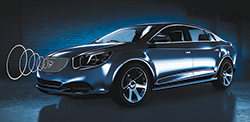Figure 1 Radar mounted behind the front emblem, which is a radome.
Advanced driver assistance systems (ADAS) in cars assist the driver and increase road safety, and these systems are widely deployed in many modern vehicles and car types. Currently, autonomous driving is a major focus of the automotive industry, and R&D institutes are making headlines with fully automated cars driving hands-off along the highway—even in cities with dense traffic. It is certain that autonomous driving will become reality in the near future.
Camera, LiDAR and radar sensors are key enabling technologies in this area. Millions of automotive radars are produced every year, and car manufacturers are starting to deploy them as standard equipment in all higher-class cars. Today, automotive radar sensors are mainly used to increase driving comfort and prevent crashes. Most automotive radar sensors that enable adaptive cruise control (ACC) operate in the conventional 76 to 77 GHz frequency range to sense other cars and objects far ahead. Advanced radar capabilities, however, demand larger bandwidths, with coverage up to 81 GHz to enable 360 degree radar vision around the vehicle. This is required for ADAS functions such as lane change assistance and blind spot detection, where high resolution and a wide operating angle are essential. Additionally, extending the automotive frequency band to 81 GHz helps mitigate interference. Altogether, this puts pressure on radar system integration to be functional across a wider frequency band than in the past.
Automotive radars must be masked by a cover, known as a radome, which is constructed from a transparent RF material. Radomes can be an emblem or a car bumper, with the radar behind it as illustrated in Figure 1. Although an emblem may be underestimated and dismissed as a simple plastic cover, it is actually a sophisticated RF element that often degrades radar detection range and accuracy. Emblems need to satisfy the requirements of aesthetic appearance, often including the 3D shape of the car logo. However, this is usually in conflict with the RF performance needed for 76 to 81 GHz operation. On the other hand, car bumpers are typically coated with metallic paint, which is, of course, critical for the automotive radar frequencies. So it becomes essential to validate the material characteristics and examine their influence on the radar sensors. Considering the criticality of the applications where radar sensors are deployed, uncertainties are unacceptable. Consequently, engineers and manufacturers need new measurement capabilities to evaluate the effect of emblem radomes and bumpers on radar performance. This article explains a novel radome measurement method and discusses the radome’s influence on the accuracy of the angle of detection with advanced radars.

Figure 2 At 100 m range, an azimuth error of 1° causes a target location error of 1.75 m.
RADOME INFLUENCES
Automotive radar sensors transmit radio signals at 24 and 77 to 79 GHz. They mainly use frequency modulated continuous wave signals that have the advantages of low power, no “blind” range and low receiver bandwidth, meaning they can be manufactured more cost effectively than pulsed radar systems. The transmitted radio signals are reflected by other objects. Due to the propagation delay and Doppler frequency shift, the radar sensor can measure and resolve range and radial velocity for multi-target situations. Depending on the properties of the antenna array, it is also possible to measure and resolve the azimuth and elevation angles. After the detection process and tracking, signal processing generates a target list that contains values such as the positions and velocities of objects and estimates of type. This list is passed to the vehicle’s electronic control unit (ECU), where it is further processed to deliver real-time decisions for vehicle maneuvers. The accuracy and reliability of this data is extremely important for the safety of the vehicle and its passengers.
The accuracy of a radar depends on many factors, such as the hardware components, software processing and the radar echo signal itself. The parameters of signal echoes with lower signal-to-noise ratio (SNR) can be measured less accurately than signals with high SNR. The effects of multipath propagation and distortion due to radomes greatly impact measurement accuracy. Inaccuracies in the azimuth measurement cause the target to appear misplaced. This is shown in Figure 2, illustrating that an angular measurement error of only 1 degree at the radar sensor causes a target at 100 m range to appear misplaced by 1.75 m in azimuth. The target will be interpreted as located in the neighboring lane. In practice, angular accuracy for such far distances must be significantly less than 1 degree for reliable operation.

